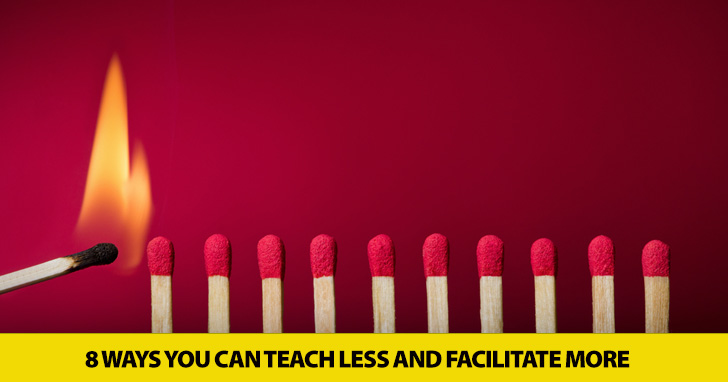8 Ways You Can Teach Less and Facilitate More


Providing feedback throughout lessons is important. It is something that will become second nature with just a little bit of practice. Feedback should be used to encourage students to work hard and indicate what they need to focus on when they are having difficulty.
Feedback often takes one of three forms: verbal, visual, or written. In this article we’ll take a look at how teachers can use these different methods to provide feedback in the ESL/EFL classroom.
Verbal Feedback Strategies
During lessons, teachers use a lot of verbal feedback to let students know how they are doing and also to transition from one section to another. Short expressions such as “Great!” or “Good job!” can be used to praise students for correct answers. Rather than tell students directly they are incorrect, it is better to ask them to try again or reconsider their answers. The goal is to elicit the correct answer from the class and students should not be afraid of being wrong so keep your reactions positive. You can summarize how students did and introduce the next topic for transitions by saying “Alright! You did so well talking about food. Now let’s move on to ~.” This will reinforce the fact that students should keep up the good work. If student responses are a little lackluster, you can point that out in your comments too. By saying “I know it’s Friday but I need a bit more energy in this next section, OK? *wait for student response* OK! Great, now we’re going to talk about ~.” you show that you empathize with students while still pushing them to do their best. It is easy to include verbal feedback in every stage of your lesson.
Visual Feedback
Visual feedback can come in two forms. The first is any expression or gesture you use with or without verbal feedback that indicates how students are doing in class. A smile or thumbs up would be one form of visual feedback. When using visual feedback, it is not always necessary to add verbal feedback and could save you time when working through an activity quickly. You can also prompt students to reconsider their answers and self correct using visual feedback. If you use the same expression each time students say the incorrect answer, they will pick up on that. This visual feedback allows you to give students another chance without verbally telling them they are wrong. Another form of visual feedback can accompany written evaluations. This may take the form of stickers, stamps, or even charts that reflect student accomplishments. You may choose to have a display in the classroom that visually represents how well the class is doing in reaching their goals so that students can see how much progress they have made and stay motivated.
Written Feedback
Teachers often have the opportunity to give students written feedback on homework assignments, on exams, and at the end of each term. These are great opportunities to point out what students did well and what areas they still need to work on. You should provide students with some suggestions of what they could do to improve and offer to assist them by meeting with them for tutorials or providing them with extra study material. You can also allow students to provide feedback for each other. Doing this during role play exercises, for example, means that students who are not performing still have to pay attention. Categories could include pronunciation, creativity, and performance so that the presenting students are marked on how well they were understood, the quality of their script, and the quality of their acting. Students could be graded as a group or individually. Student evaluations should not have any bearing on the grades that you give students but you might want to use the information to say which skit was the best and who the best actor was.
Regardless of how often you use these different types of feedback, it is important that students are given a clear image of their performance as well as their goals. This will help them focus of what is most important. Giving constructive criticism and providing students with both the materials and support they need to succeed are important. Doing these things will help students excel in their studies and maintain a positive attitude towards education.